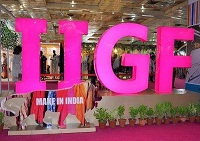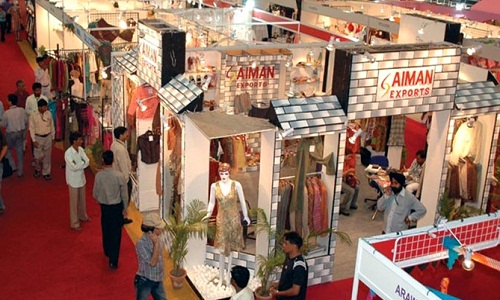FW
Huntsman Corporation has announced that it has decided to retain the Textile Effects business and exclude it from its planned Pigments and Additives spin-off. Strong pricing recovery for titanium dioxide and the identification of business improvement opportunities representing more than $75 million in annual EBITDA are expected to significantly enhance the financial strength of Venator's business.
The $75 million in business improvements are incremental to current earnings and are expected to be completed by the end of next year. Huntsman also announced that the name of its planned spin-off will be called Venator Materials Corporation. Venator is the Latin word for hunter and is intended to acknowledge the Huntsman legacy.
Huntsman has formed a spin-off company named Venator. Venator is the Latin word for hunter and is intended, in part, to acknowledge the Huntsman legacy. Venator will be a premier pigments company. Strong pricing recovery for titanium dioxide and the identification of business improvement opportunities representing more than 75 million dollars in annual EBITDA are expected to significantly enhance the financial strength of Venator's business.
Venator shares are expected to trade on the New York Stock Exchange under the ticker VNTR after the distribution to Huntsman's shareholders, which remains targeted for the second quarter of 2017. Meanwhile Huntsman continues to improve its free cash flow generation and grow its downstream differentiated businesses. During 2016, it also repaid approximately 550 million dollars of debt and significantly strengthened its balance sheet.
Huntsman, based in Switzerland, is a dyes and chemicals company. It provides high quality dyes and chemicals to the textile and related industries, manufacturing a broad range of dyes and chemical products that enhance the color of finished textiles and improve performance characteristics, such as wrinkle resistance, lasting freshness and the ability to repel water and stains. The business currently serves over 4500 customers located in 80 countries. Its operating companies manufacture products for a variety of industries. Huntsman Textile Effects is a major innovator with more than 700 patents.
Though global fast fashion brands Uniqlo, Zara and H&M clocked in more than $600 million in sales from Australia's departmental stores and local fashion chains last year but weird weather and soft Australian dollar weighed on profitability. The international apparel giants are poised to take more sales from the likes of Target and Big W this year but margins are under pressure. And sales per store rate are dropping rapidly as the shine comes off these global outfits.
The Japanese fashion label and Zara accounted for about 6 per cent of apparel sales growth based on their 2016 performance or 0.9 per cent of cumulative clothing, accessories and department store sales in Australia and that doesn't even include H&M's sales, which doesn't release its financial results until later in 2017.
2015 sales at H&M, Zara and Uniqlo totalled about $460 million, which equated to about 1.1 per cent of total clothing, accessory and department store sales in Australia over the same period according to the Australian Bureau of Statistics. Uniqlo's sales grew by 247 per cent to $174.5 million in the full year to August as it reaped the benefits of six new store openings, taking its total store numbers to 12 in Australia however its losses for the same period blew out to $5.8 million up from $3.04 million a year earlier.
But the broking house said that this was unlikely to deter new international arrivals, keen to take advantage of shopper appetite for sharply priced, on-trend apparel - a trend that is adding to the pain for Australia's iconic discount department stores Target and Big W. Macquarie identified Myer, Woolworths' Big W as well as Wesfarmers' Target as the businesses with the most to lose from any new international arrivals. However, analysts from Macquarie said that apparel specialists were also likely to find themselves between a rock and hard place as landlords brought down the space allocated to the sector and increased leases to internationals.
Bangladesh will set up a wage board for readymade garment workers by 2018. The minimum monthly wage for garment workers in Bangladesh is $68, compared to about $280 in mainland China. In Bangladesh, 3.5 million workers in 4,825 garment factories produce goods for export to the global market, principally Europe and North America. The Bangladeshi garment industry generates 80 per cent of the country’s total export revenue. However, the wealth generated by this sector has led to few improvements in the lives of garment workers, 85 per cent of whom are women.
The majority of garment workers in Bangladesh earn little more than the minimum wage, far below what is considered a living wage, which would be the minimum required to provide a family with shelter, food and education.
The annual growth for Bangladesh’s readymade garment sector is predicted to be seven to nine per cent over the next five years. Still, garment exporters worry about profit margins being squeezed due to increased compliance costs in the wake of the 2013 Rana Plaza factory collapse and a push from buyers to further reduce costs. It’s estimated most of Bangladesh's garment exporters are operating with a profit margin of just three per cent.
The Tirupur dyeing industry has been sanctioned Rs 200 crores in a bid to help it recover. The move will help some 450 dyeing units. Following environmental concerns these units had collectively set up 18 common effluent plants at a total cost of a 100 crore rupees. The project had become a global standard and was appreciated by environmentalists and the processing industry the world over.
However, since it was the first of its kind, the project faced several technical challenges. Cost overruns put the units in a financial crisis.
Tirupur is a hub of the textile processing and knitting industry providing employment to over five lakh people and contributing 22 per cent to the total garment exports of the country. Tirupur is better known as the knitwear capital of India as it accounts for 90 per cent of India's cotton knitwear exports.
Limping back on a slow-but-promising western order recovery and robust domestic consumption, Tirupur is pursuing another growth cycle. The cluster sees protective wear, sports garments and defense-related businesses as obvious lines, given its huge spinning capacities.
Entrepreneurs want to wean themselves away from the fickle western apparel market to focus more on avenues of sustainable business like technical textiles or medical textiles and specialised products such as car upholstery.
The Financial Commissioner Agriculture Production Department (APD), Pramod Jain says cocoon production registered an increase of 3 per cent. Thus it recorded a production of 973 metric tons in the current financial compared to last year’s 147 metric tons.
Under the Institute Village Linkage Program (IVLP), Central Sericulture Research and Training Institute (CSR&TI) has adopted 100 cocoon farmers in the vicinity of the institute at Pampore. The projects planned for development of the Silk Industry in the state with the support of Central Silk Board (CSB). Director of Sericulture, Malik Farooq informed that the department of sericulture has taken various initiatives for the uplift of this vital sector. The reason behind this is to see that the silk industry is developed on sustainable basis. He also informed that two separate projects for SC/ST families associated with the sericulture sector are in offing.
If US president-elect Donald Trump implements his plan of border tax, one of his major campaign promises, exports from Bangladesh, particularly of garment items, will face further tariff in the US market. Here, it may be recalled that during his 17-month presidential campaign, Trump had called for imposing border tax of between 35 and 45 per cent on imports of goods to protect American jobs from unfair foreign competition.
Ahsan H Mansur, Executive Director of the Policy Research Institute observed that if the proposed border tax is imposed, Bangladesh would be sufferers akin to other countries. The implementation of the proposed border tax would be the one of the worst news for the Asian country as well as for rest of the globe, he added.
Bangladesh's exports, particularly of garment items, would unequivocally be affected if Trump follows through on his campaign promise once he is sworn into office on January 20, according to Mansur. Although most of the attention is still focused on whether Trump will put the tariffs on China or target companies that move production offshore, proposals for a US tax regime that penalises imports could have a more permanent and far-reaching effect, it has been reported.
Frederic Neumann, co-head of economic research at HSBC in Hong Kong feels, it would be a huge issue for Asia. It would also raise the spectre of retaliatory measures by other countries. Since the US does not have adequate number of factories, local manufacturers might not meet the demand. As a result, the US retailers will depend on imported clothing items, particularly from Bangladesh and other Asian countries, which mainly produce the basic apparel items, Mansur claimed.
As per Textile Care, Fabric and Leather Technologies section of the VDMA (Association of German machinery and plant manufacturers), the German sewing and apparel technology industry has seen a 15.9 per cent increase in turnover compared to previous year January to October period. VDMA is the conceptual partner of Texprocess, the leading international textile fair held in Frankfurt.
With export sales of €523 million, Germany is in the third amongst exporting nations worldwide, behind China and Japan. M1ember companies are well placed amongst international competition. That is because they are continually developing and innovating.
"Championing Hong Kong designers is one of the most important pillars of Hong Kong Fashion Week (HKFW). This year Fashionally’ is presenting a two-part fashion show titled ‘Fashionally’ Collection #8’ and ‘Fashionally’ Collection #9,’ featuring Fall/Winter 2017 collections of 14 of the city’s most promising talents. Some of HK’s favourite designers will present captivating and inspired outfits on the catwalk, along with first-timers like Phenotypsetter, Yeung Chin, Kenson Tam, Winnie Witt and Ka Wa Key."

Championing Hong Kong designers is one of the most important pillars of Hong Kong Fashion Week (HKFW). This year Fashionally’ is presenting a two-part fashion show titled ‘Fashionally’ Collection #8’ and ‘Fashionally’ Collection #9,’ featuring Fall/Winter 2017 collections of 14 of the city’s most promising talents. Some of HK’s favourite designers will present captivating and inspired outfits on the catwalk, along with first-timers like Phenotypsetter, Yeung Chin, Kenson Tam, Winnie Witt and Ka Wa Key.
The first show Fashionally’ Collection #8 will focus on modern, updated women’s wear from design labels, including 112 mountainyam, Kevin Ho, FromClothingof, Lapeewee, Hang and Blind by JW. Contemporary reinterpretations of feminine aesthetics are lined up for ramp. The second show #9 showcases provocative and progressive designs that challenge the status quo from such design labels as Demo, Modement and Sherman Kwan. A look at some designers lined up for Fashionally’ Collection #8 and #9:
Mountain Yam: Kaleidoscopic Wonderland

He has a flair for mascu-feminine, psychedelic streetwear and isn’t afraid to experiment with graphic prints, which are evident in his latest collection, ‘Searching Self’. Expect deer-link motifs and a colourful burst of electric reds and blues with? The prints are offset by pieces in complete black to bring balance to the collection.
Shirley Wong: A liberation of beauty
Her latest collection ‘Beauty Undefined’ is based on the concept that women’s wear don’t have to be rigid and conform to a stereotypical feminine narrative. She wants to offer alternatives and choices for women who do not follow traditional standards.
Jane Ng: To the battlefront
Her collection, ‘Cloudy Swordsman,’ is a slight diversion from her usual aesthetic. Here she plays with volume and light, sheer materials that create an ethereal collection suited for those who want to take to the sky. A notable piece is her sleeved shirt styled with suspenders and a corset, and paired with a balloon skirt.
Kevin Ho: Surrealist drapery
His designs are typically recognisable by their distinct feminine cuts, silhouettes and patterns. For his latest collection, Suprematism, Ho returned to his roots with a display of contrasting fluid and structured elements using draping techniques against form-fitting cuts to create asymmetrical dresses made from different textures of wool, leather and silk. The result is a surreal and intriguing juxtaposition between structure and fluidity that’s bound to turn a few heads.
Yannes Wong & Stephanie Wong: Suited nomad
Lapeewee’s collections are all about taking a minimalistic approach to masculine, structured materials and treating it with feminine cuts and details. Their latest collection, ‘The Gypsy Wanderers,’ is no exception. The looks are reminiscent of Korean street-style and are for women who don’t want to be too girly.
Walter Kong & Jessica Lau: Blossoming winter
For A/W season, the duo has combined the lore of Sherlock Holmes with bold colours reminiscent of imperial China for a maximalist aesthetic. Blind by JW is all about going for more, and mixing various types of fabrics, textures, techniques and colours to create memorable statement pieces.
Mim Mak: Utilitarian construction
In her latest A/W17 collection, we can expect a stronger stance on utilitarian structure balanced by protruding, pleated details, along with striped and dotted embellishments inspired by the key pressure points of the human meridian. The colours of the pieces adhere to traditional earthy colours of olive and honey as well as stark black for easy, seasonal wear.
Aries Sin: Debonair gent
Modement typically adheres to a monochrome colour palette and juxtaposes fitted and loose pieces, which are also evident from her latest AW17 collection – ‘Concrete Jungle’. Here, Sin takes a romantic throwback to the 1950s, where men were fully layered in tailored suits with a matching vest, shirt and textured overcoat. To cope with the busy life and unrelenting concrete jungle of Hong Kong, Modement presents a strong silhouette with stark and serious colours.
Yeung Chin: Breaking the rules
Yeung’s designs are highlighted by a mixture of textures and unconventional choice of fabrics and use of trim. The geometric and sculptural elements to his designs are in full force in his latest collection. We can expect to see challenging proportions, asymmetrical silhouettes and bold, provocative outerwear.
Kenson Tam: Inner child
His collection is a continuation of his preppy, boyish narrative. You can expect dandy prints, a generous use of colour and mix of wool and knit textures. Tam’s designs are for men who aren’t afraid to show their inner child to the world.
Sherman Kwan: Femme fatale
She’s all about using black, black and more black in her clothing, oscillating between biker chic and utilitarian casual wear. For her upcoming collection, we can expect more dark and stark pieces with sharp cuts and a sleek silhouette.
Derek Chan: Schoolboy romance
For his latest collection, Chan continues a similar narrative to his brand. He’s showcasing his take on a 1950s prep school, giving a romantic twist to a prim and proper uniform. Expect to see bodysuits, breeches and tailored jackets with nostalgic schoolboy detailing.
Winnie Chen: Global domination
Chen’s brand reflects her edgy, global perspective in fashion and her latest collection, ‘Trinity’, focuses on three key philosophies that form her style foundation: geometry, space and body. Chen is a master in tailoring, which can be seen in her bold, architectural designs that offer a full-rounded, asymmetrical silhouette.
Key Chow: Redefining masculinity
It’s been a while since a designer has offered such a fresh outlook on menswear as Chow – filled with fairytale fantasy and using complex knit and lace fabrics to enhance the ‘twink’-like aesthetic he hopes to achieve.
"The 58th edition of India International Garment Fair (IIGF) is scheduled to be held from January 18 to 20 in New Delhi. The Fair, organised by the Apparel Export Promotion Council (AEPC) will cater to Autumn-Winter 2017-18. It is one of the largest and most popular platforms in Asia where domestic and overseas garment buyers source and forge business relationship with India’s finest in apparel and fashion accessories domain."

The 58th edition of India International Garment Fair (IIGF) is scheduled to be held from January 18 to 20 in New Delhi. The Fair, organised by the Apparel Export Promotion Council (AEPC) will cater to Autumn-Winter 2017-18. It is one of the largest and most popular platforms in Asia where domestic and overseas garment buyers source and forge business relationship with India’s finest in apparel and fashion accessories domain.
Power packed fair to showcase A/W 2017-18 collections The Fair would be inaugurated by Smriti Irani, Minister of Textile along with Ajay Tamta, Minister of State for Textiles, Rashmi Verma, Secretary (Textiles), and other officials. The 58th IIGF will have as many as 312 participants from 14 states including Delhi-NCR, Rajasthan, Maharashtra, Uttar Pradesh, West Bengal, Haryana, Tamil Nadu, Punjab, Gujarat, Karnataka etc. The 312 participants will be showcasing women’s wear, accessories, kid’s wear and menswear.

IIFG will also organize fashion shows twice a day on all three days for showcasing the collections for business development. Besides this, a theme pavilion, best display awards are some of the other attractions of the event. And as Ashok Rajani, Chairman AEPC says, “The 58th IIGF is India’s largest garment show in South Asia covering apparel and fashion accessories; encompassing a vast exhibition area. The objective is to showcase latest garment and fashion accessories trends shaping up and leverage brand India across the globe.”
The current market sentiments are not upbeat. Delays in roll out of apparel package and stagnation in EU and US markets have led to export stagnation as per export data of April-Dec 2016. Rajani is hopeful IIGF would serve as an effective platform for networking, influencing buyer sentiments and demonstrating our product strengths.
Started in in 1988, IIGF happens to be the only B2B fair conducting meaningful and quality business. Incorporated in 1978, AEPC is the official body of apparel exporters in India that provides invaluable assistance to Indian exporters as well as importers/ international buyers who choose India as their preferred sourcing destination for garments.












